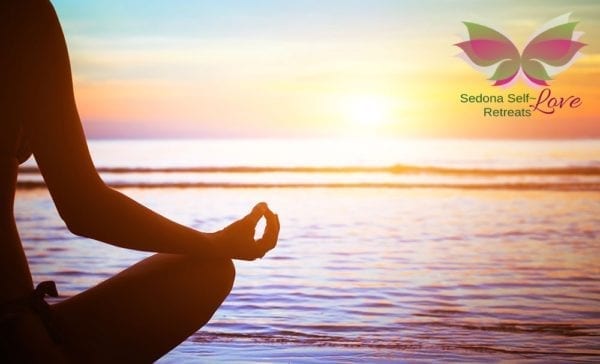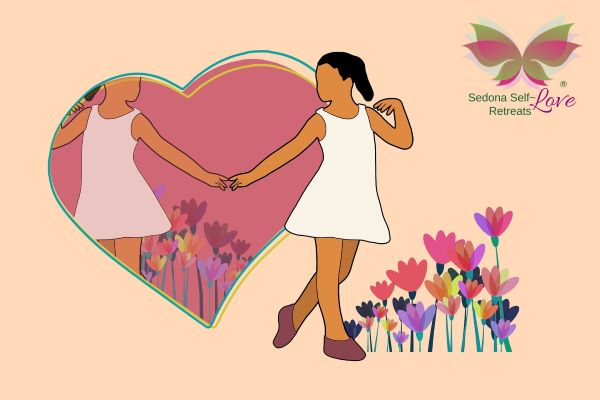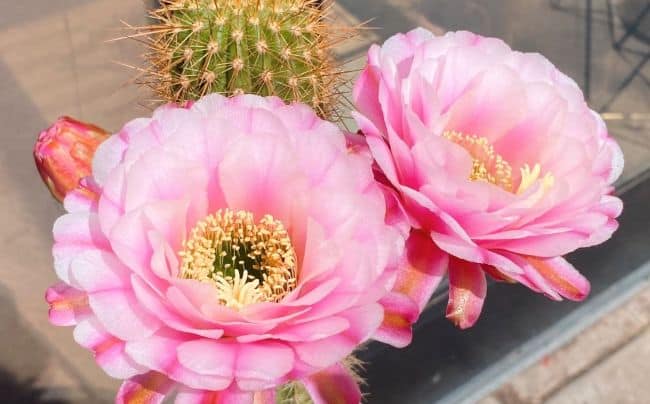
Learn how to Practice Meditation
Meditation and yoga are more popular today than ever! Whether you choose a practice of yoga which includes meditation, or just meditation alone – it is inspiring to learn how accessible meditation really is, and the physical benefits that go along with the practice.
Meditation, from the Latin word meditatio meaning “to think, contemplate, devise, ponder” is a practice where an individual uses a technique to train attention and awareness, and achieve a mentally clear and emotionally calm and stable state. Classic meditation techniques focus the mind on a particular object, thought, or activity. The term meditation was introduced as a translation for Eastern spiritual practices, referred to as dhyāna in Hinduism and Buddhism, and comes from the Sanskrit root dhyai meaning to think of or contemplate.
Meditation has been practiced since antiquity in numerous religious traditions, yet as a yoga practitioner and teacher, I know meditation as the seventh limb in the eightfold path to self-realization and enlightenment described in Patanjali’s Yoga Sutras. Each limb is to be practiced sequentially as one step prepares the practitioner for the next moving from forgetfulness to illumination, from unhealthy to health, from sadness to happiness, from constriction to happiness. Practicing the limbs of yoga fosters the idea that impurity is destroyed and the radiance of wisdom (jnana) leads to discernment (viveka).
The eight limbs of yoga are: yama (self-restraint), niyama (right observance), asana (right alignment), pranayama (regulation of breath), pratyahara (withdrawal of the senses), dharana (concentration), dhyana (meditation), and samadhi (free attention). Dhyana or meditation evolves out of the previous limb of dharana or concentration where the controlled mind that is gained through pratyahara (sense withdrawal) gives rise to our ability to intensify our attention on a single point. When this concentration is prolonged through an uninterrupted flow, it becomes dhyana. In dharana, we experience release, expansion, quietness, and peace -freeing us from attachment. This freedom results in the indifference to the joys of pleasure or the sorrows of pain. The repeated continuation, or uninterrupted stream of that one point of focus is called absorption in meditation (dhyana).
Not to be confused by Sanskrit words, but rather decipher that meditation comes out of a process of preparing the mind for the purpose of reaching a heightened level of spiritual awareness and to develop your inherent potential.
Meditation may be used to reduce stress, anxiety, depression, and pain, thereby increasing peace, perception, self-concept, and well-being. Continual scientific research aims to define the possible health effects on our psychological, neurological, and cardiovascular systems along with other effects on brain and immune function.
For these reasons, meditation attracts not only spiritual seekers on the road to enlightenment, but anyone looking to explore different ways of being – through physiological changes in the body that create more joy, happiness, and ease in daily life. Meditation helps to cultivate the middle path by increasing and enhancing one’s ability to allow, tolerate, and observe the complex world and relationships around them without attaching one’s self or an expectation or outcome to any person or event.
In the 1970s, Herbert Benson MD, a researcher at Harvard University Medical School, coined the term “relaxation response” after conducting research on people who practiced transcendental meditation. Benson states the relaxation response is “an opposite, involuntary response that causes a reduction in the activity of the sympathetic nervous system” the fight or flight response. Studies on the relaxation response have documented the following short-term benefits to the nervous system:
Lower blood pressure/improved circulation
Lower heart rate
Less perspiration
Slower respiratory rate
Lower blood cortisol levels
More feelings of well-being
Scientifically, meditation has been proven to:
Decrease anxiety Improve cognitive thinking Ease stress by activating the Parasympathetic Nervous System
Increase oxygenation of the body through deeper breathing
Moderate digestion
Stimulate the relaxation response
Increase mental and physical flexibility
Stabilize emotions by increasing the grey matter in your brain which is responsible for muscle control, seeing, hearing emotions, and speech.
Whether you come to meditation through the philosophy and practice of yoga, or meditation as the practice in and of itself, you are embarking on a great self-exploration of your mind and body.
K.I.S.S. Principle
Simplified, meditation is an approach to training the mind and training implies practice. The idea of meditating can be quite intimidating and even unfathomable for a beginner to sit for long periods of time and think of nothing. The easiest way to approach meditating is to keep it simple and straightforward by focusing on the breath – creating a fixed point of concentration and not go for distance. Quality over quantity is the idea, and sitting initially for 5-10 minutes is an accessible approach. Focus and concentration is challenging, so start by meditating for only a few minutes and then work up to longer periods of time. Concentration meditation involves focusing on a single point like the breath, repeating a single word or mantra, trataka (i.e. staring at a candle flame), listening to a repetitive gong, or counting beads on a mala. The trick to meditation is each time you notice your mind wandering, you draw yourself back and refocus your awareness on the chosen object of attention. As thoughts arise let them pass by like clouds in the sky. Know that even the most proficient meditators do this. This is the practice and in this process your ability to concentrate improves.
Another variation is mindfulness meditation which encourages the practitioner to observe wandering thoughts as they drift through the mind without passing judgement or labeling. Here the intention is not to get involved, but to be aware of each mental direction as it appears. Mindfulness meditation reveals how your thoughts and feelings tend to move in particular patterns. Through this process you can become more aware of the tendency to quickly judge an experience as good or bad, pleasant or unpleasant and with practice, an inner balance develops, so as not to be driven by your perceived “likes” and “dislikes”.
Various techniques make meditation easier to embrace and takes the pressure off of what is seemingly the impossible or daunting for a beginner. One of my favorite meditation techniques is the cultivation of compassion which involves envisioning negative events and recasting them in a positive light by transforming them through compassion. I also subscribe to moving meditation techniques, such as tai chi, qi gong, and walking meditation, especially accessible to a beginner because intrinsically and physiologically one is balancing the brain with each swing of the opposite arm in movement with the opposite step hence working across the center line of the body and balancing the left and right brain hemispheres. The balancing effect is readily calming to the mind, clearing way for concentration.
However, the purpose of meditation is not to achieve benefits, but simply to be present. The goal of meditation is no goal, but rather to de-fragment your thoughts so you can step back and make sense of them with a clearer prospective. In Buddhist philosophy, the ultimate benefit of meditation is liberation of the mind from attachment to things it cannot control, such as external circumstances or strong internal emotions. The liberated or “enlightened” practitioner no longer needlessly follows desires or clings to experiences, but instead maintains a calm mind and sense of inner harmony. Meditation is said to increase the blood flow to the brain and “rewire the circuity” of the brain. In the movie What The Bleep Do We Know, science showed the more we repeat the same thought patterns in our mind the stronger those brain synapses become. Sort of like the more chocolate you eat, the more chocolate you crave. Meditation invites us to strengthen positive feel good neurological pathways and weaken or break the cycle of negatives disruptive patterns.
How to Start
• Take your “seat” and have a timer with a gentle alarm (like on your phone).
• Find a conducive environment that is peaceful, quiet, dimly lit where you will not be distracted or disturbed for fifteen minutes or so. Use a blanket or shawl if you are chilly, and make sure you are not hungry or have a full stomach because digestion can be distracting.
• Sit upright on any firm pillow. A zafu, or meditation pillow, is a round, firm pillow helpful to sitting upright. Or you can sit in a chair that supports an upright position. Slumping can be distracting and cause you to lose focus. Alternatively, you can lie down, if you can avoid falling asleep.
• Start your timer for 3-5 minutes and settle in. Close your eyes. If you choose to lie down you might enjoy an eye pillow over your eyes.
• Take a few slow deep breaths in through the nose and out the mouth. Now allow an easy breath, not to make it anything other than it is. Come into body awareness by focusing your attention on your breath. Follow your breath moving in through your throat into your lungs and back again. Notice the rise and fall of your belly, the rise and fall of your chest. Expanding on the inhale and gently contracting on the exhale. The mind tends to wander on the out breath, which is something to keep in mind. When your mind does wander, simply bring your awareness or “attention muscle” back to your breath.
• Remember not to judge or chastise yourself. Go easy on yourself. The greatest mediators all experience the mind wandering, so do not overthink or analyze the process.
• Maintain this meditation for 2-3 minutes by continually bringing your awareness back to your breath. Do this until the timer chimes. That is it! Take a few stretches.
• As you continue to practice, try it for longer periods – 5-10 minutes. Use a timer so you do not have to think about it and can completely immerse yourself in the experience.
• If you have particular difficulty concentrating follow the above steps and try counting. Count your breaths until you reach five, and then start over again.
• Regularity is key to building mindfulness with a shorter daily practice being more effective than a once-in-awhile longer sit. Meditating 10 minutes a day is better than mediating for an hour once a week.
There is an old adage, where the mind goes the body follows and the attention you give to the things around you sends energy to those things: conversations, events, ideas. Most of the time we are thinking of multiple things at once which creates a kind of chaos in the mind. Meditation highlights your breath and in turn exercises your attention to focus on one thing, clearing the mind of scattered thinking, increasing your mind’s concentration and awareness, and in turn creating a cascade of effects in the body for peace, calm, and equanimity. Learn to meditate during your Sedona Self-Love Retreat – experience your private Meditation: Divine Soul Connection session! You are also welcome to do this guided 10-minute Self-Love Meditation.
Men’s Healing Retreat in Sedona
Discover how a personalized men’s healing retreat in Sedona can support stress relief, emotional balance, and total well-being this Men’s Health Month. Real strength starts within.
Best Arizona Retreat Company
We are Honored: Sedona Self-Love Retreats Named Arizona’s Best Private Retreat Company 2025.
Embrace Self-Compassion in Sedona
Learn the beautiful, sacred art of self-compassion during your powerful, private, customized Sedona Self-Love Retreat.
Sedona Solo Self-Love Retreat
Every Sedona Self-Love Retreat is uniquely customized and aligned for each individual participant.





